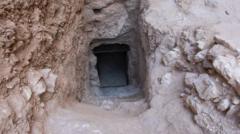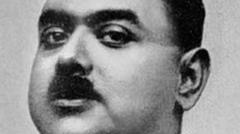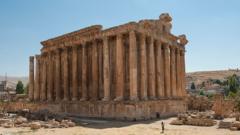Recent reports suggest that researchers may have uncovered a second tomb belonging to Pharaoh Thutmose II, marking a significant moment in Egyptology just after the announcement of another tomb discovery related to Tutankhamun.
Discovery of Possible Second Tomb of Pharaoh Thutmose II in Egypt

Discovery of Possible Second Tomb of Pharaoh Thutmose II in Egypt
A new potential archaeological find near Luxor may unveil more secrets of ancient Egypt's royal past.
A British archaeologist, Piers Litherland, announced that his team might have located a previously undiscovered tomb in Egypt that is believed to belong to King Thutmose II. This potential discovery comes shortly after Litherland revealed another tomb, which is the first of its kind found in over a century since Tutankhamun's tomb was discovered. Litherland speculates that the new site may house the pharaoh's mummified remains.
Archaeologists suggest that Thutmose II's first tomb was likely emptied six years after his burial due to flooding and was subsequently relocated to a second location. This new site is believed to be situated beneath a 23-meter tall structure composed of limestone, ash, rubble, and mud plaster, intentionally designed by the ancient Egyptians to mimic a mountain's landscape within the Theban Necropolis, near Luxor, Egypt.
The first tomb was thought to be hidden behind a waterfall, which contributed to its flooding. While seeking this initial burial site, archaeologists stumbled upon a posthumous inscription suggesting that the contents were moved nearby by Thutmose II's wife and half-sister, Hatshepsut. The archaeological team is now carefully removing the layers of material obstructing the tomb, opting for manual digging rather than tunneling, which was deemed hazardous. Litherland estimates that the tomb's excavation may take another month.
The initial tomb, associated with the burial sites of royal women, revealed distinctive decorations, affirming it as a pharaoh's tomb upon further investigation. Litherland described encountering a blue-painted ceiling adorned with yellow stars—an indication reserved solely for tombs of kings. The excitement of the discovery has left him feeling astounded and emotionally charged.
Thutmose II is historically significant, being the consort of Queen Hatshepsut, a renowned pharaoh and one of the few women to rule as pharaoh in her own right. His lineage includes Tutankhamun, who reigned approximately from 1493 to 1479 BC, marking the earlier findings of his tomb by British archaeologists in 1922.















